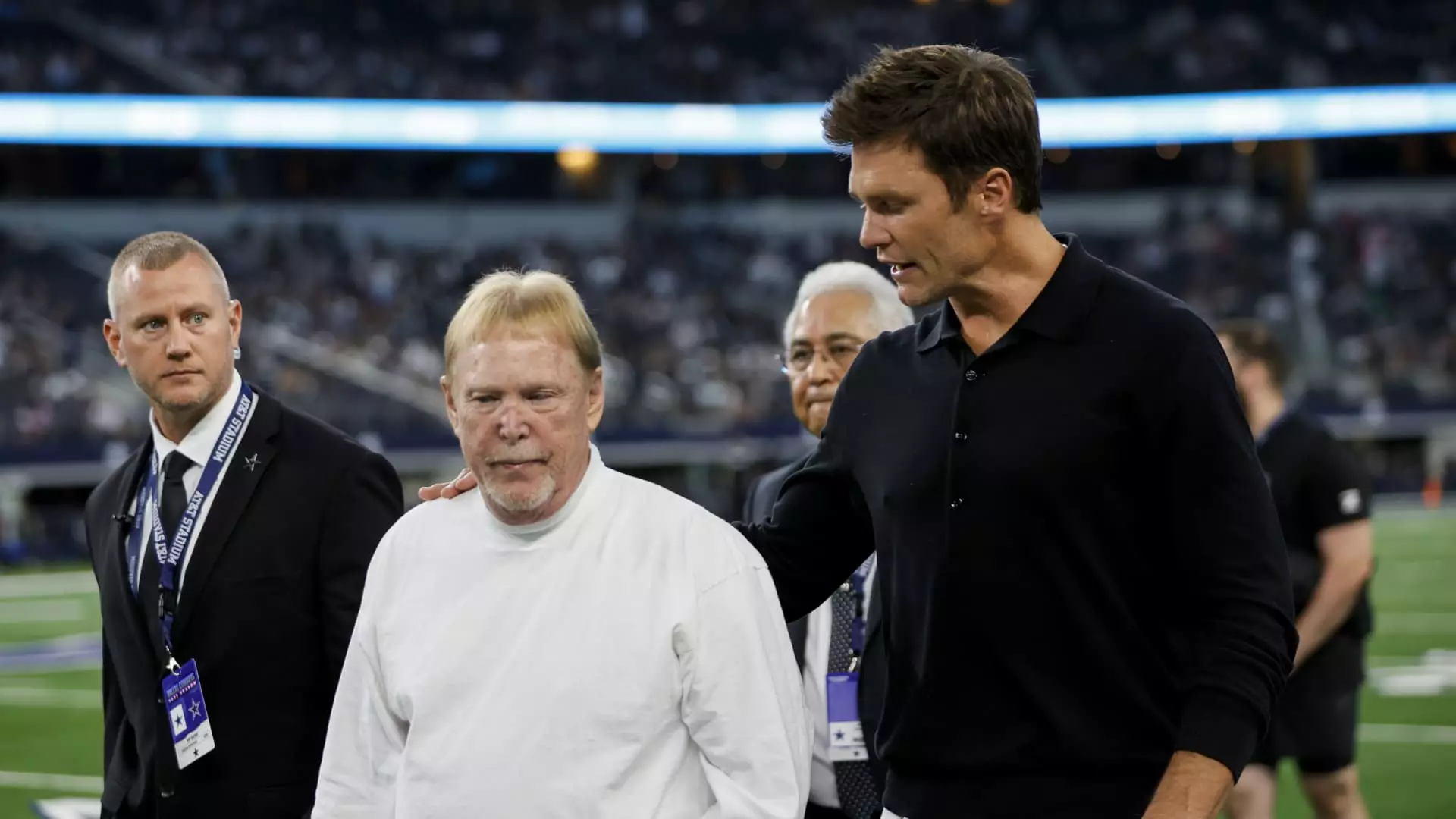The recent approval by NFL owners for Tom Brady to acquire a minority stake in the Las Vegas Raiders marks a significant milestone not only in Brady’s post-playing career but also within the landscape of professional football ownership. This investment of approximately $220 million represents about 10% of the team, valued at an impressive $3.5 billion, showcasing the remarkable financial evolution of the Raiders since their move to Las Vegas in 2020. This article delves into the implications of Brady’s investment, the growing financial clout of the Raiders franchise, and the unique dynamics of NFL ownership involving former players.
The Las Vegas Raiders have undergone a dramatic transformation since their relocation from Oakland, some of which is encapsulated in their financial ascent. Initially valued among the lower echelon of the league, the Raiders surged to what is now the fifth most valuable franchise in the NFL. This valuation, arrived at by other owners and financial analysts, illustrates a substantial increase in the team’s revenue streams, largely attributed to the team’s relocation and the construction of their state-of-the-art Allegiant Stadium.
With reported revenues of $780 million in 2023, the Raiders generated the third-highest income in the league, emphasizing the immense commercial opportunities provided by a new market and venue. Significantly, the Raiders benefited from high ticket prices, with fans paying an average of $169 per ticket last season, reflecting the high demand and the franchise’s effective monetization strategies.
Moreover, Allegiant Stadium’s hosting of non-NFL events adds another layer of profitability. The franchise accrued over $50 million from concerts and other significant events, a strategy that diversifies income streams and fortifies its financial position outside of traditional football revenues.
Brady’s introduction into ownership brings new intricacies to the existing structures of NFL team partnerships. While a minority stake often comes with limited operational influence, Brady’s situation is particularly nuanced. The “flip tax” of 10% imposed on their investment, intended for distribution among the other 31 teams, reflects the league’s long-standing policies governing ownership and profitability sharing. Such financial arrangements can bolster solidarity among franchises but may also highlight the disparities in revenue management across the league.
The valuation of the Raiders has also raised eyebrows within the financial circles of sports banking. Obtaining a share at a valuation that appears to offer a significant discount of over 50% compared to broader estimations could be seen as a savvy move for Brady and his partner Tom Wagner. Typically, minority partners face discounts of 20-25%, leading to questions about the valuation methodologies employed by the league and the overall market dynamics in play.
Transitioning from an athlete to an owner is exciting, but it is not devoid of challenges. Brady’s new role will come with strict guidelines affecting how he interacts with the Raiders organization. Notably, while he can cover Raiders games as a broadcaster, he cannot participate in production meetings, nor will he have access to team facilities or direct interactions with players and coaches. Such restrictions illustrate the nuances involved in dual roles within sports media and team ownership, balancing the need for integrity in broadcasting with the responsibilities of team management.
As a significant figure in sports, the five-time Super Bowl MVP’s ability to communicate within the boundaries set by the league will be closely watched. His past experiences as a player and now as an owner in both the NFL and the WNBA with the Las Vegas Aces underscore the increasing trend of athletes transitioning into investment roles, however, they must navigate the complex regulations and unwritten rules of sports ownership.
Tom Brady’s foray into NFL ownership carries historical significance and sets the stage for evolving narratives around ex-players becoming part of the franchise’s financial and operational landscape. The growth trajectory of the Las Vegas Raiders, combined with the benefactor nature of Brady’s investment, paints an optimistic picture for the franchise’s future endeavors. As the Raiders look to capitalize on their recent achievements and burgeoning value—with an owner who understands the intricacies of both the game and the business—the synergy between Brady’s competitive spirit and the team’s aspirations is poised to usher in a promising era for the Raiders and its fanbase.

